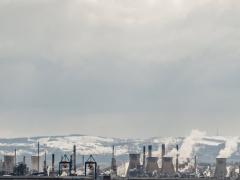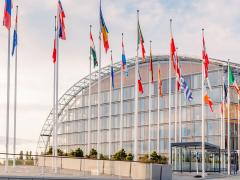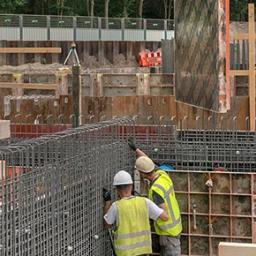Rehearsing the future
The future of urban development, infrastructure and mobility is cloaked in great uncertainty. The Netherlands is on the eve of a number of far-reaching developments, that are difficult to oversee. There is the energy transition, rapid developments in information technology, a changing population number and composition and shifting relations between administrative bodies. In Rehearsing the Future, PBL Netherlands Environmental Assessment Agency has developed four scenarios to explore different possible futures: Bubble City, State of Green, Market Place and Our Neighbourhood. With these scenarios, politicians and policy makers, but also businesses and civic society, can get to work. Rehearsing the future can broaden their views on how urban regions, their infrastructure and transport patterns can pan out in the future, what this means for the (policy) choices that need to be made today and which new challenges and options might arise.
The uncertainties this study calls attention to, are inherent to complex systems such as urban regions and of a fundamental nature. They cannot be tamed by providing more data, more advanced statistics or improved models. Does urban density have meaning in a highly digitised world? Will we all be travelling in a multimodal way via an app or will we hold on to our personal vehicles, self-driving or not? How will virtual or augmented reality influence how we experience public space? And who will decide on the design of our urban areas in the future?
Long-term perspectives on smart mobility and housing
Uncertainty does not only apply to possible changes in development trends in urbanisation and transport. It also applies to the views, perceptions and opinions on these developments in society. Policy makers and strategists will need to relate to these uncertainties.
For six policy themes – proximity, housing, smart mobility, accessibility and inclusion, virtualisation, robotisation and datafication, and governance and financial flows – the Spatial Outlook has done short practice runs to illustrate how developments and views on these issues can differ in the longer term.
The demand for housing is foreseen to be high in the coming decades. Satisfying this demand is not just a matter of building the right number of dwellings, but also involves looking at housing types, locations and who will be building them.
The ways in which we will use our homes in the future differ widely across the scenarios. In one scenario, homes become much more transitory than they are today, using flexible housing subscriptions instead of owning or renting long-term, whilst in another scenario people feel much more rooted.
In one scenario, the focus lies on the transformation of real estate within the existing urban area, whilst in another large-scale (sub)urban expansion takes place. There are also large differences in who is responsible for building, selling and letting housing. And the policy challenge varies: different futures demand different frameworks to serve public interests.
Shift from physical to digital
A development that plays an important role in all four scenarios, but has different consequences in each one, is the shift in emphasis from the physical world to the digital sphere. The shift comes with new tasks. A new set of answers can be given to seemingly simple questions, such as where someone is (for instance in a virtual space) or if an automated, fully connected car is still a car (or perhaps also a data factory).
The policies that are now in place for urban development and transport, and the rules that apply, may need to be adapted. If access becomes more a matter of digital connectivity then of physical mobility, if urban spaces can be reprogrammed in the blink of an eye, today's definitions of key concepts such as ‘infrastructure’ or ‘public space’ may need to be revised.
Using scenarios for strategic policy making
In these scenarios (published as the Spatial Outlook 2019), PBL looks at 2049 (30 years ahead) and explores possible new developments, new challenges and views that are relevant for policy on different levels of scale, from the municipal to the national level. We do so by providing four narrative scenarios: Bubble City, State of Green, Market Place and Our Neighbourhood. The scenarios can be used in policy processes aimed at vision development, strategic planning and the formation of coalitions.
Through this Spatial Outlook, we offer tools to administrators and policymakers who are dealing with the inherent complexity and uncertainty in strategic policies in the fields of urban development, infrastructure and mobility in the Netherlands, but possibly also abroad. The scenarios can be used to ‘rehearse the future’, so the future does not just happen to us.
Note on the COVID-19 pandemic
This publication is the English translation, for an international audience, of the original Dutch report that was published in 2019. The study thus predates the COVID-19 pandemic and therefore does not refer to the current situation.
The scenarios discussed in this report cover a wide range of possible futures. Although a pandemic is not explicitly considered, the narratives do offer a set of possible developments that fit with a variety of views that are currently expressed on the pandemic's potential long-term impact.
Authors
Specifications
- Publication title
- Rehearsing the future
- Publication subtitle
- Scenarios for urban development, infrastructure and mobility in the Netherlands in 2049
- Publication date
- 2 July 2020
- Publication type
- Report
- Page count
- 68
- Publication language
- English
- Product number
- 4197




